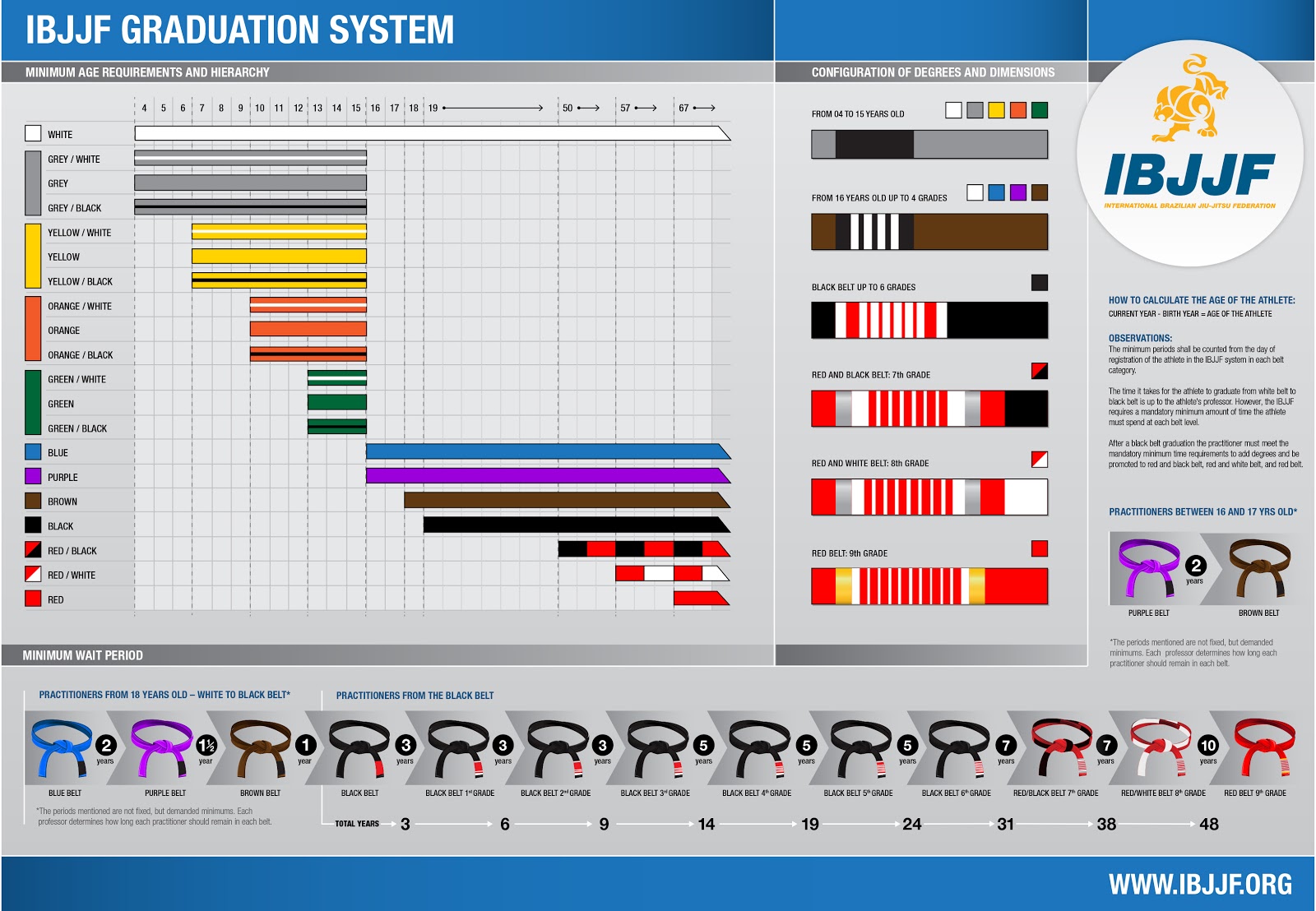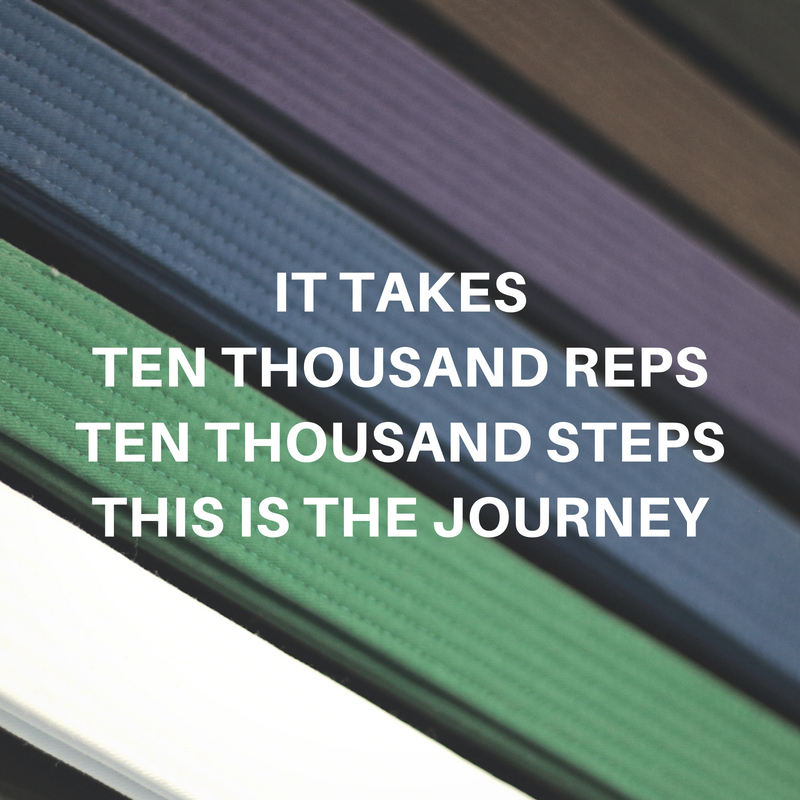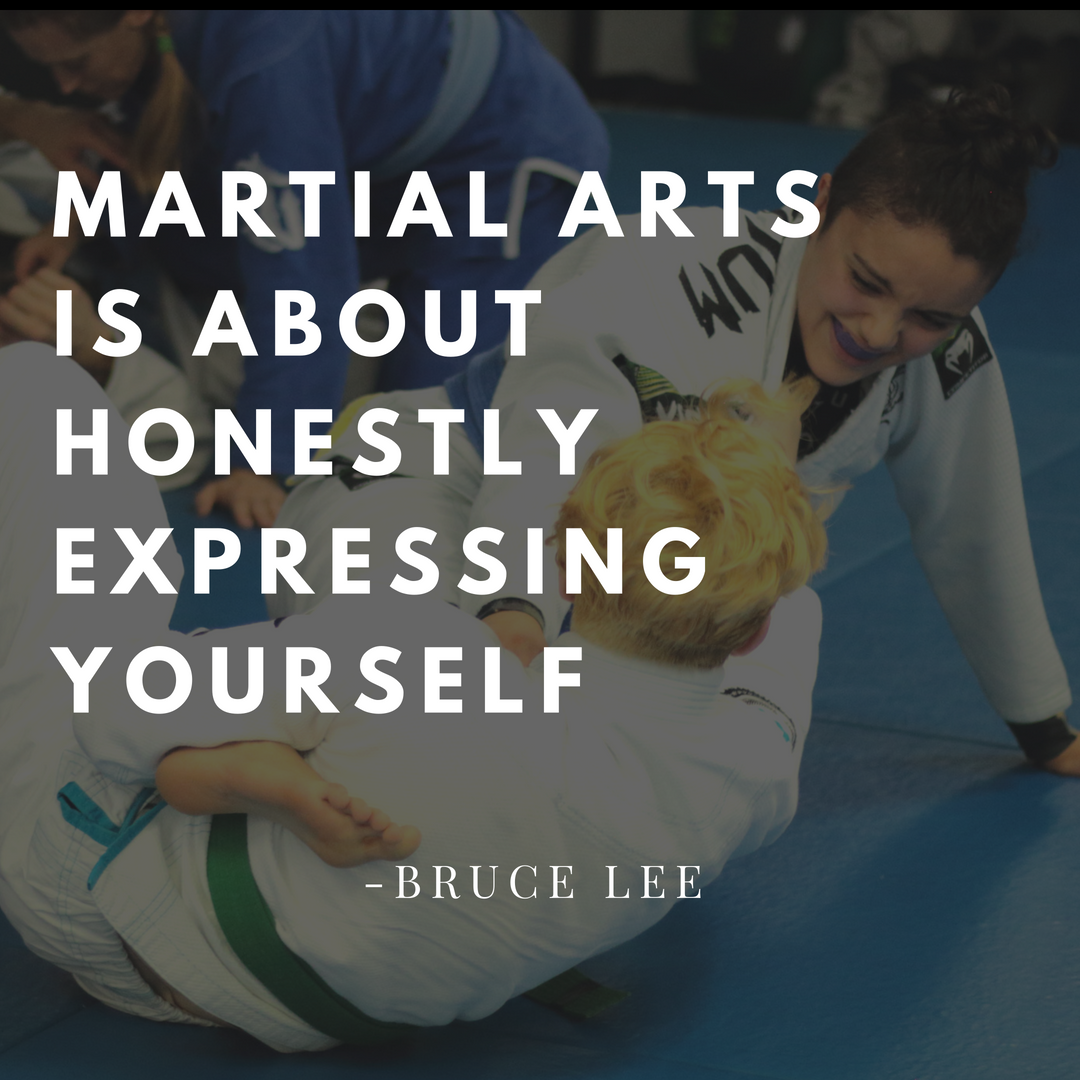How Long To Get Black Belt In Bjj

We use belts as milestones of learning and these belts are earned through hard work. The BJJ belt is one the hardest journeys in martial arts respected and revered in the combat sport world. Many compare the purple belt of Brazilian jiu jitsu at the same level as a black belt from other martial arts.
How long does it take to get a BJJ black belt?
It can take anywhere from eight to twelve years to earn your black belt, given that you spend consistent time on the mat, limit any injuries, and closely follow the goals for your development. We will break down some of the key details of belt progression in Brazilian jiu jitsu through this article.
If you view Brazilian jiu jitsu as a language it would look like this: At white belt you learn to create letters; their shapes and sounds. At the green belt you are still learning to form these letters. When you reach your blue belt you have a grasp of chaining together these letters and create some words. During your purple belt you make purposeful words and begin to connect them to form basic sentences. Purple belts begin to have conversations. Once you reach your brown belt these words form sentences. You can discuss and persuade with each sentence. When you reach the black belt in Brazilian jiu jitsu you are writing essays. You can express yourself with sheer confidence. Do not be fooled however the black belt is not the pinnacle of BJJ. There is a higher level once you are a black belt. The beauty of BJJ is the learning never ends. The coral belts are the culmination of 1000's upon 1000's of hours on the mats and the most prestigious in the BJJ world. This article will not discuss the coral belts other than their direct relationship to the time spent as a black belt.
What are the BJJ belts?
In the International Brazilian Jiu Jitsu Federation (IBJJF) the belts are White, Blue, Purple, Brown, and Black.

Image from <www.ibjjf.com>
How do BJJ Belts work?
In BJJ the belt progression from white to black takes between 8 and 12 years. There are five belts
- White: Everything is new.
- Blue: You develop a solid defense and a knowledge of general strategy "Escapist". Typically you are a blue belt for two years. You may be eligible for your blue belt no earlier than 16 years old
- Purple: You are able to connect positions and attack with combinations of techniques. The Purple belt will take no less than two years.
- Brown: An athlete's personality becomes evident in creating his own game "Your Game" As a brown belt you can expect one to two years of training to complete. Minimum age of 18 years old.
- Black: Completeness. Your game possesses depth and complexity and becomes internalized. "Instinct and Reflection" You find that the learning does not end at the black belt. Each stripe on the black belt is three years of training. The youngest age you are allowed to hold a black belt is 19.
At Dark Horse Jiu Jitsu in Longmont, Colorado, we have also added the green belt, which is placed between white and blue. We view belts as milestones of your progression, not destinations. Each belt is a stepping stone. While achieving your next belt is a great goal to focus on towards the black belt, it is not the end of the journey as you shall discover. We promote our students based on three criteria:
-
Mat time
-
Technical knowledge
-
Gameness
There are no formal tests for belt progression at Dark Horse. This being said, how do you know where you are in your own journey? Your belt progression is definitely a testament of the milestones you have covered through your journey. What does this mean? How is it determined? We will look at this in some depth here.
Your belt progression is reviewed by the coaches and professors through attendance, active rolling, observation of your technique, and through your goal meetings. Martial arts in Longmont and around the world give an outlet for inner expression and understanding of yourself, exposed while on the mats or in competitions. There is no avoidance of hard work. This is not easy, but nothing easy is worthwhile. When you start your journey you will be awarded a white belt with the completion of the introduction class and your first formal class.

Mat Time
Your mat time is the primary place where learning and practice of the techniques is done, thus making mat time one of the primary considerations for promotion. With this in mind, always sign in so you receive credit for work done. Mat time is defined as classes, open mats, randoris, competition class and competitions. Consider the perspective of mastering anything in life, it takes 10000 steps, 10000 repetitions. This is the journey.
Technique
The ability to perform the individual techniques or moves learned. This is done by your demonstration of the techniques as well as being able to help others. BJJ may feel like an individual or personal growth but we rely on each other to improve and become better. By working with other students and learning to describe and show the techniques, you will undoubtedly improve yourself.
Gameness
Gameness is the students skill on the mat while training. A student is judged to have gameness if they use the technique and strategy of jiu jitsu with proper leverage and timing. Gameness is balanced against technique because new students often force moves based on strength, speed or flexibility. By relying on personal attributes they will have a more difficult time finding proper leverage for the techniques and their short term success will hamper long term gains. This is not to say that jiu jitsu isn't about knowing techniques, rather being able to use them when needed.
Belt Breakdown
While every person's Jiu Jitsu journey is unique, we want to give you a realistic breakdown of the time and commitments necessary to progress here at Dark Horse. In order to do that, we will make some assumptions for this article. The assumptions are as follows:
-
The student takes 3 classes per week
-
Has no catastrophic injuries
-
Has no substantial real world interruptions
-
Is attentive/active in class participation and journaling.
There are plenty of resources which a student of Brazilian jiu jitsu has access to through literature and videos. These resource can dramatically improve your journey as well as shorten the time it takes to meet your goals. Here is a break down of belt progression with some of the details of what the professors and coaches are watching for at each belt.
White/Green Belt
There are no prerequisites for a white belt and will take approximately two years, including time as a white belt for your green belt. IBJJF does not recognize the green belt. Dark horse uses the green belt to give you defined stepping stones and make the progression to blue more manageable.
When you begin training you receive a white belt. Here you are given the basic structures and vocabulary of the jiu jitsu game. Learning to spell/read/write is a great metaphor which we will apply to the belt progression within Brazilian jiu jitsu. At this point in your journey you learn the letters of BJJ. These letters are in the form of basic moves, posture and positions. As a white belt, less is more. What this means is, white belts should focus on the most fundamental techniques and movements. Too much technical knowledge at this early stage of the journey can slow your progress. Focusing on the fundamentals will serve the white/green belt to become intimate with a few basic movements or techniques and use these as the building blocks for the rest of their jiu jitsu career. At this point in the journey, knowing many techniques or moves can confuse and overwhelm you.
Keep it simple. Stay safe, practice and repeat the moves you have learned. Drilling the fundamental moves will never hurt you. Learn to protect and evade. Protect your neck from chokes. Protect your arms keep them close to your body like a tyransaurs rex. Evade with your hip out/shrimp, extend, posting and escaping. Learn the knee on elbow defense which will lead you to replacing guard. Your green belt is a great milestone as a white belt.
The challenges for the white/green belt
The challenge for the white/green belt is learning to lose. The first thing a new jiu jitsu practitioner must do is lose their ego. Training/randori's are not about winning, it is about learning, feeling and experiencing. You will become humble and will almost certainly be defeated constantly as you begin the journey. When you accept that you will get tapped often, then start letting go of the need to win, "losing" will become your closest allie for learning. Like the revolutionary Nelson Mandela once said, "I either win, or I learn."
Blue Belt
A minimum of two years of training. IBJJF requires a minimum age of 16 to receive a blue belt.
A blue belt has a firm grasp on the range of positions in jiu jitsu.Instead of constantly escaping and evading you become comfortable in most positions and we build solid answers for each of them. Sometimes the blue belt is referred to as the belt of escapes. Your focus is to form your letters. You weiled technical knowledge and begin to apply this knowledge. Your defense ability at the blue belt makes it difficult for higher belts to submit you. You protect competently and begin to piece the letters into words. Like sentences structure, you are creating words by knowing the techniques and options within the techniques then successfully implementing them.
Often times the blue belt will find themselves able to defend and escape but will struggle with submitting the opponent. This is normal and as your journey continues the attack pieces will fill in. The blue belt is a pivotal level for most BJJ practitioners as it is often the most notable plateau in BJJ. Many people reach this plateau and walk away. Visit the Blue Belt Blues Article to help you through.
Purple Belt
Approximately four to six years with a minimum of two years at Purple. IBJJF age requirement is no less than 16 years of age
The purple belt is where you have built a strong enough defense and begin to discover your game. Experimentation and honing your foundation is the key. Chaining moves and drawing your opponent into your game will begin here. At purple you see the sentence structure and know the words well. The beauty of knowing the language, its letters, words and structure allows you to build cohesive sentences from what once was just letters and words. At purple belt you will find a completely new appreciation for the guard position. This belt is all about your guard game whether in guard or passing guard the bottom line is you will be here a lot.
Movement, momentum and timing will be fine tuned within the ranks of the purple belt. Jiu jitsu will take on a more personal story based on your body physique and the techniques that you connect with. By focusing your attention on these aspects, your game develops into a more detailed one. At purple belt, it is not about knowing every move under the sun, but instead it is about tightening up the techniques you use. Purple belt look deeply into the foundation of their game. You escape easily and consistently and your defense is frustrating for all levels. The purple belt must be honest with their weaknesses as well. This is a great time for a goal meeting. When? Now! At the beginning , middle and end.
Tweak your knowledge hone your skills. Building a "game" of three techniques around each position offers you a high chance of success. By learning and developing combinations of three techniques, it becomes more difficult for your opponent to defend. You recognize the most common counters to each of your techniques, and have developed the best responses to these counters. The amount of knowledge and time you have put in at this level is often compared to a black belt in many other martial arts.
Brown Belt
It will take at least five years to get to your brown belt and a minimum of one year holding it before your black belt. The age requirement is 18 years old
Most brown belts are defensive fortresses which are nearly impenetrable. You are at ease when another opponent is putting pressure and threatening attacks. Your patience is like a cat stalking its prey, or a boa constrictor slowly tightening the trap until there is no escape. This is the fine tuning of all your technique into your game. You will use pressure, space, gravity, balance and attacks to push your game and expose the weakness of the other from the top.
Your game is tight, and developed in every position. It has become less about learning new techniques, and much more about threading techniques together into clear sentences. A large amount of time is dedicated to shortening reflex time. Going "back to the basics" brings a new level to every aspect of the game.
You have not only mastered the letters of jiu jitsu and know how to speak the words those letters create, but now you are articulating complete sentences which express your unique game.
Black Belt
It takes approximately eight to ten total years as a minimum. You can be no younger than 19 years old to receive a black belt in BJJ
As a black belt you know the letters automatically and the words you use are deep and resound. You tell complete stories, written every time you face someone on the mats. The black belt knows the journey never ends. They continue to refine and grow not only in their art but mind and spirit as well. Most black belts have no less than a decade of work put forth in development. In our academy the black belt is addressed as Professor. You may feel you are at the pinnacle of the Brazilian jiu jitsu pyramid at the black belt level. While you are near the top, there are nine degrees on a black belt, each with requiring a minimum of 3 years of active work. Then we must look at the Coral belts, and finally the Red Belt, which is awarded to a black belt who has been an active black belt for 30 years! But I digress. Needless to say a black belt in BJJ knows his art with thousands of hours on the mat practicing, teaching and adjusting his own game to an effortless perfection.
High Expectations, Celebrating Failure and Why Plateaus are Your Friend
You should have the highest expectation for yourself on the mats. This is not to say that you should be win or submission focused or even belt focused. This means each time you step on the mat listen attentively focus on the technique and above all "do your best". Train consistently.

Failure is good when we learn from it. Jiu jitsu is all about the failures, for they are our fastest lessons showing us a path to learning. Our goal at Dark Horse is "for each student to reach their potential." We believe in you and will show you how to believe in yourself. Over the first few years you will learn to let go of winning and embrace learning. You will be 'the Nail', getting hammered over and over by more experienced belts, by younger lower belts. All of this will teach you, and will help you improve in the fastest way possible. You will recognize which techniques work and which do not. You will scrutinize yourself and continue to test your knowledge and ability. You will be pushed out of your comfort zone and encouraged to keep pushing even when the journey is daunting. You will be taught that failure is good, and with it comes grit. You are not here to win, you are here to learn your inner strength residing deep inside you. Those around you will continue to push you through uncertainty in a safe controlled environment. This is preparing you for the moment when you are challenged with a difficult situation; be this verbal, mental, emotional or physical.
Celebrate your failures as they make you stronger and teach you more than winning. With your failures you develop resilience. Failures expose your games opportunities. Only hard work will triumph talent. Think of the person who did not have to work hard for good grades. What happens to this person when they meet a challenge and receive a bad mark. Typically they fall because they have never had to work hard for their marks. Failure will make you strong, humble and always striving to improve. Jiu jitsu will build perseverance in your core. Your emotional tool box will be filled with try, try again, don't give up, try again, adjust this, try again and again and maybe you will not get it the first time or the second time but maybe it will click on the third or tenth attempt.
Plateaus happen in everything we learn or do if we stick with it for an extended period of time. Plateaus are those periods of time when we reach what we feel is the pinnacle of our learning or experience. You just ran 5 miles, biked 100 miles, did 100 push ups or pull ups and you feel as you can not go any further. Have you plateaued? I would argue no! I say do one more and do another keep pushing yourself. How we react to plateaus is our character. When something gets hard do we give up or do we keep pushing. Getting past your plateaus is good for everyone. It shows us that we can achieve whatever we set our minds to. You want to test your resolve take a competition class. In comp class you will be pushed harder than you probably have ever been pushed before. In jiu jitsu there are many plateaus each one a little different but ever present. Plateaus are those ah-ha moments when you think you can learn no more or go further. We push through these.
Failures, and plateaus are your friend these are what develop you as a person and as a martial artist in the Brazilian jiu jitsu world.
How Long To Get Black Belt In Bjj
Source: https://bjjdarkhorse.com/blog/90541/What-is-the-Belt-Path-of-the-Brazilian-Jiu-Jitsu-Martial-Artist-
Posted by: breedingalliat.blogspot.com

0 Response to "How Long To Get Black Belt In Bjj"
Post a Comment